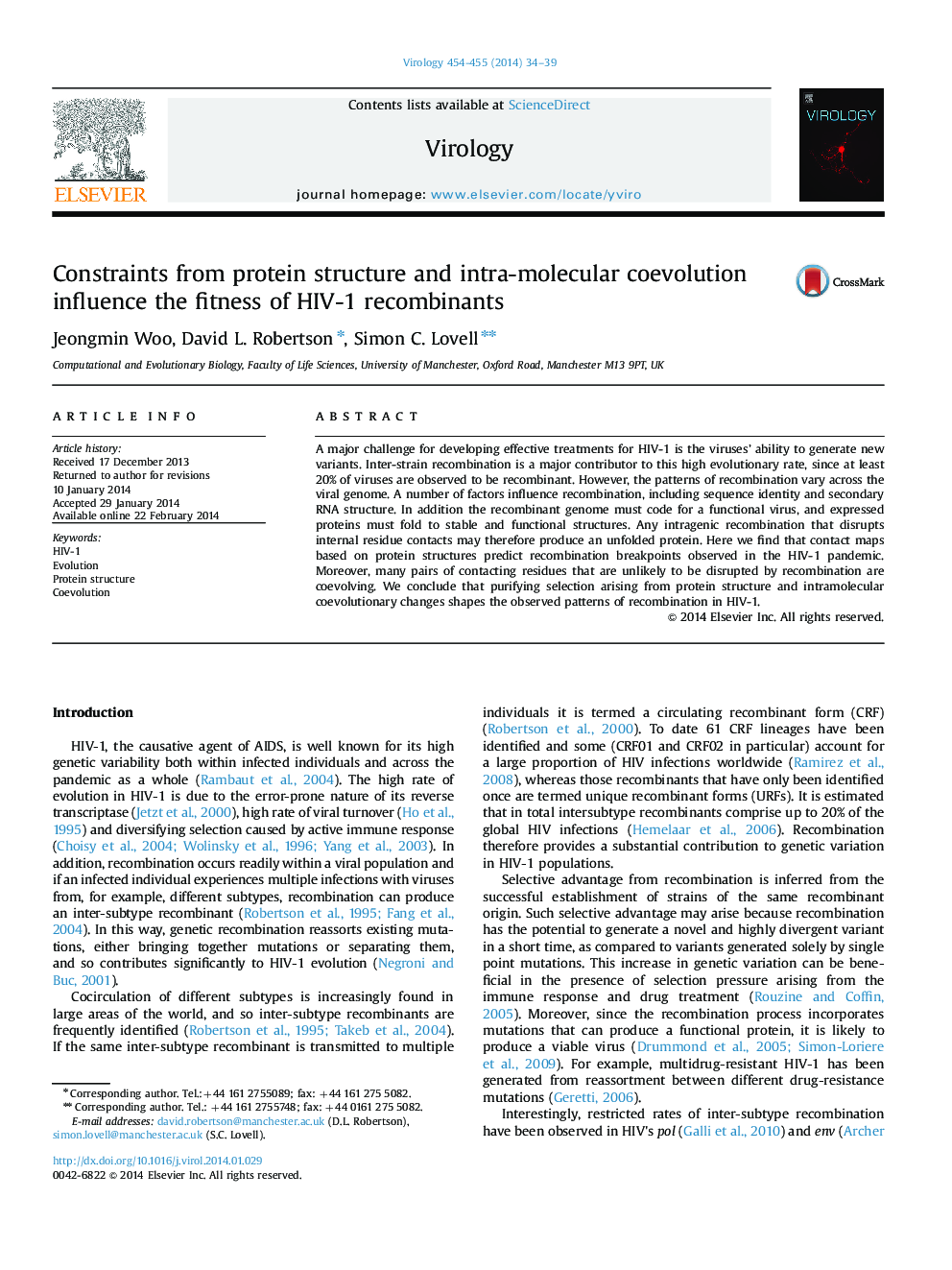| کد مقاله | کد نشریه | سال انتشار | مقاله انگلیسی | نسخه تمام متن |
|---|---|---|---|---|
| 6140397 | 1594251 | 2014 | 6 صفحه PDF | دانلود رایگان |
عنوان انگلیسی مقاله ISI
Constraints from protein structure and intra-molecular coevolution influence the fitness of HIV-1 recombinants
ترجمه فارسی عنوان
محدودیت های ساختار پروتئین و هموگلوبین مولکولی بر تناسب اچ آی وی-1 بازدارنده ها تاثیر می گذارد
دانلود مقاله + سفارش ترجمه
دانلود مقاله ISI انگلیسی
رایگان برای ایرانیان
کلمات کلیدی
موضوعات مرتبط
علوم زیستی و بیوفناوری
ایمنی شناسی و میکروب شناسی
ویروس شناسی
چکیده انگلیسی
A major challenge for developing effective treatments for HIV-1 is the viruses' ability to generate new variants. Inter-strain recombination is a major contributor to this high evolutionary rate, since at least 20% of viruses are observed to be recombinant. However, the patterns of recombination vary across the viral genome. A number of factors influence recombination, including sequence identity and secondary RNA structure. In addition the recombinant genome must code for a functional virus, and expressed proteins must fold to stable and functional structures. Any intragenic recombination that disrupts internal residue contacts may therefore produce an unfolded protein. Here we find that contact maps based on protein structures predict recombination breakpoints observed in the HIV-1 pandemic. Moreover, many pairs of contacting residues that are unlikely to be disrupted by recombination are coevolving. We conclude that purifying selection arising from protein structure and intramolecular coevolutionary changes shapes the observed patterns of recombination in HIV-1.
ناشر
Database: Elsevier - ScienceDirect (ساینس دایرکت)
Journal: Virology - Volumes 454â455, April 2014, Pages 34-39
Journal: Virology - Volumes 454â455, April 2014, Pages 34-39
نویسندگان
Jeongmin Woo, David L. Robertson, Simon C. Lovell,
